This grade I listed monument was designed by Ellis & Woodward and built by Lot Jackaman at a cost of £7,000. It stands on the site of The Shambles (or market) which occupied three sides of the site. The Corn Exchange opened for business in July 1862. The floor in the hall was inserted in 1969, and there are now shops on the ground floor. These premises were refurbished in June 2010.
A plaque documenting the history of The Corn Exchange.
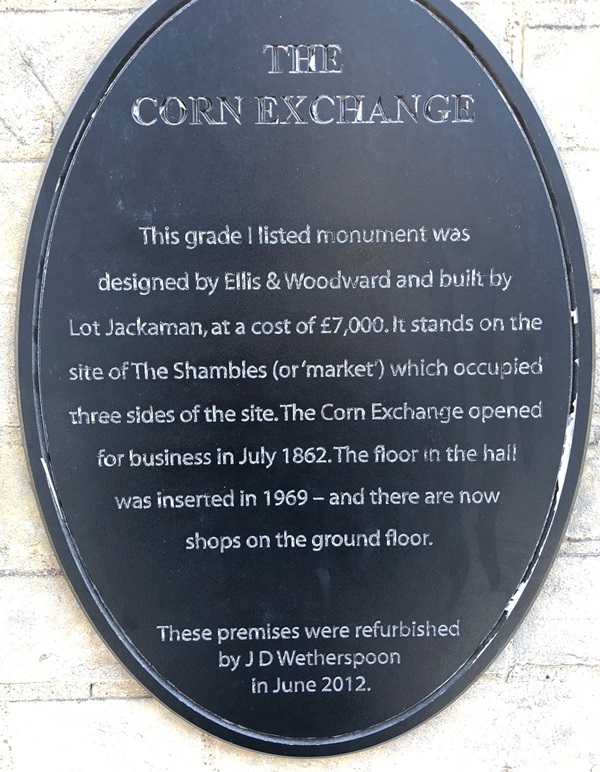
The plaque reads: This grade I listed monument was designed by Ellis & Woodward and built by Lot Jackaman, at a cost of £7,000. It stands on the site of The Shambles (or ‘market’) which occupied three sides of the site. The Corn Exchange opened for business in July 1862. The floor in the hall was inserted in 1969 – and there are now shops on the ground floor.
The premises were refurbished by J D Wetherspoon in June 2012.
Text about the J D Wetherspoon Bury St Edmunds design philosophy.
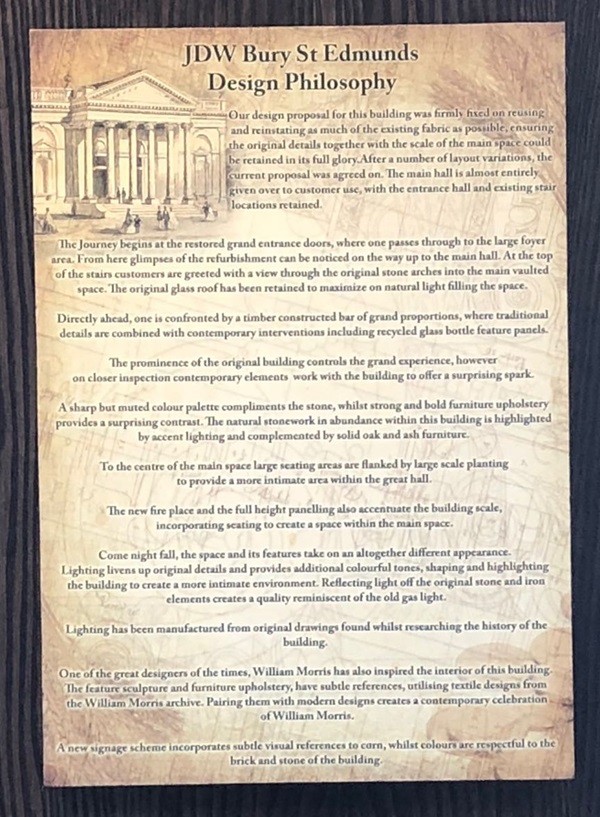
The text reads: Our design proposal for this building was firmly based on reusing and reinstating as much of the existing fabric as possible, ensuring the original details together with the scale of the main space could be retained in its full glory. After a number of layout variations, the current proposal was agreed on. The main hall is almost entirely given over to customer use, with the entrance hall and existing stair locations retained.
The journey begins at the restored grand entrance doors, where one passes through to the large foyer area. From here glimpses of the refurbishment can be noticed on the way up to the main hall. At the top of the stairs customers are greeted with a view through the original stone arches into the main vaulted space. The original glass roof has been retained to maximise on natural light filling the space.
Directly ahead, one is confronted by a timber constructed bar of grand proportions, where traditional details are combined with contemporary interventions including recycled glass bottle feature panels.
The prominence of the original building controls the grand experience, however on closer inspection contemporary elements work with the building to offer a surprising spark.
A sharp but muted colour palette compliments the stone, whilst strong and bold furniture upholstery provides a surprising contrast. The natural stonework in abundance within this building is highlighted by accent lighting and complemented by solid oak and ash furniture.
To the centre of the main space large seating areas are flanked by large scale planting to provide a more intimate area within the great hall.
The new fire place and the full height panelling also accentuate the building scale, incorporating seating to create a space within the main space.
Come night fall, the space and its features take on an altogether different appearance. Lighting livens up original details and provides additional colourful tones, shaping and highlighting the building to create a more intimate environment. Reflecting light off the original stone and iron elements creates a quality reminiscent of the old gas light.
Lighting has been manufactured from original drawings found whilst researching the history of the building.
One of the great designers of the times, William Morris has also inspired the interior of this building. The feature sculpture and furniture upholstery, have subtle references, utilising textile designs from the William Morris archive. Pairing them with modern designs creates a contemporary celebration of William Morris.
A new signage scheme incorporates subtle visual references to corn, whilst colours are respectful to the brick and stone of the building.
A plaque document the history of the building.
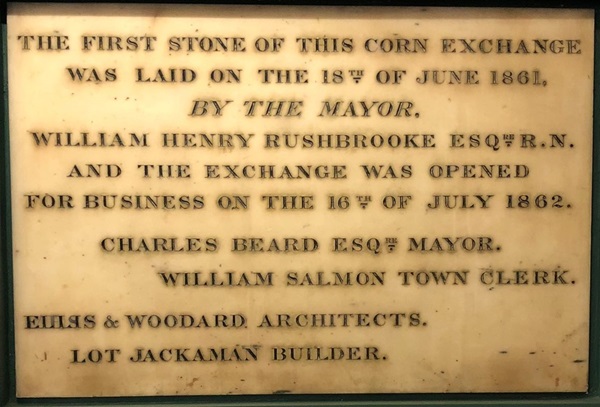
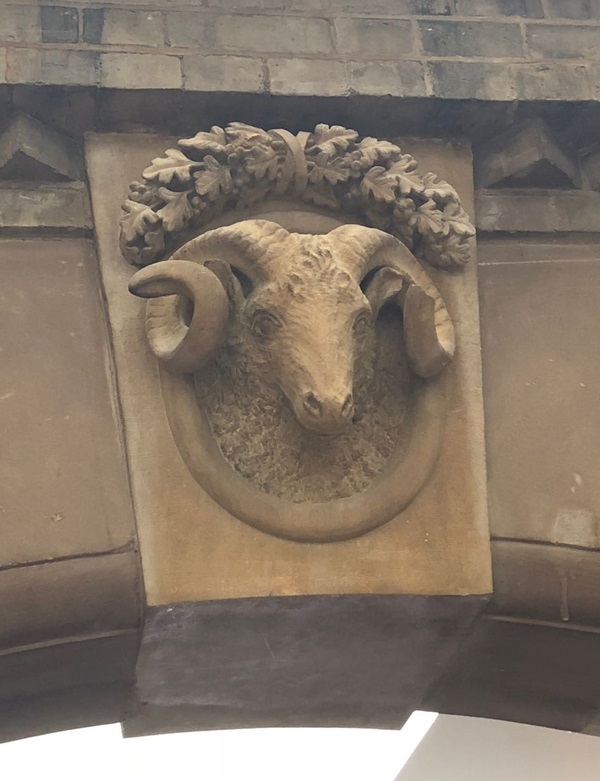
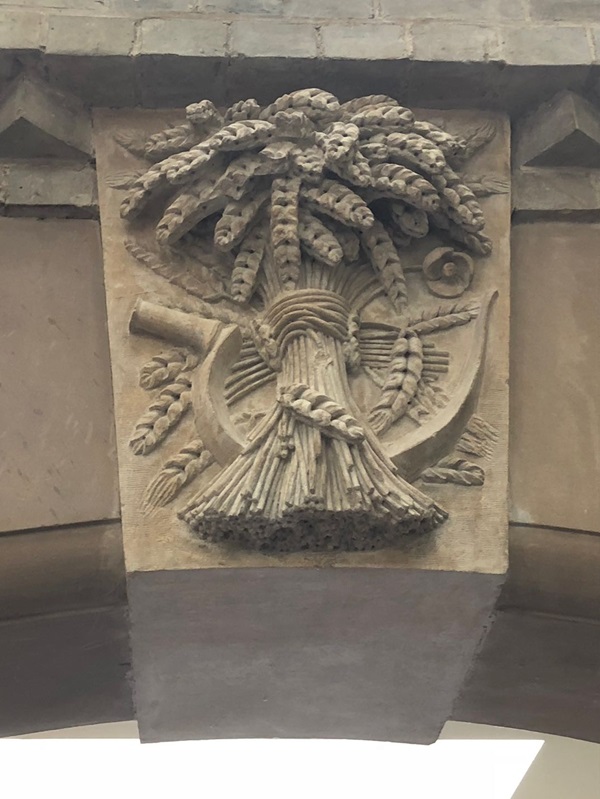
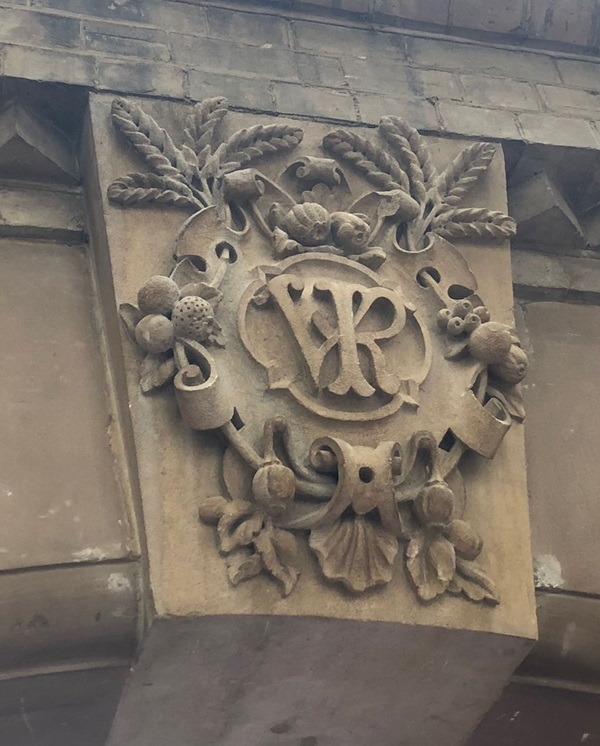
Whilst researching the history of the building we discovered drawings of original light fittings designed for The Corn Exchange.
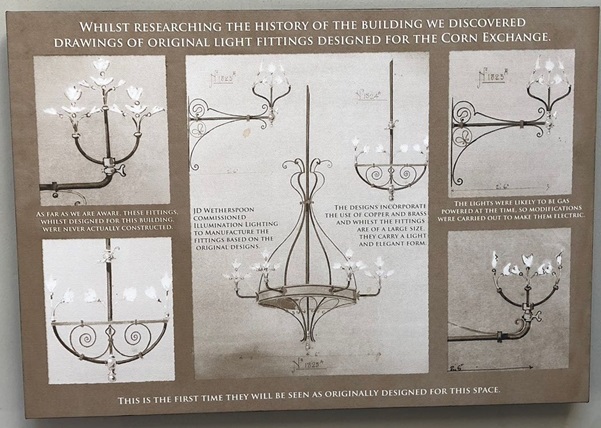
As far as we are aware, these fittings, whilst designed for this building, were never actually constructed.
J D Wetherspoon commissioned illumination lighting to manufacture the fittings based on the original designs.
The designs incorporated the use of copper and brass, and whilst the fittings are of a large size, they carry a light and elegant form.
The lights were likely to be gas powered at the time, so modifications were carried out to make them electric.
The Corn Exchange original commissioned glass window by Melt Design.
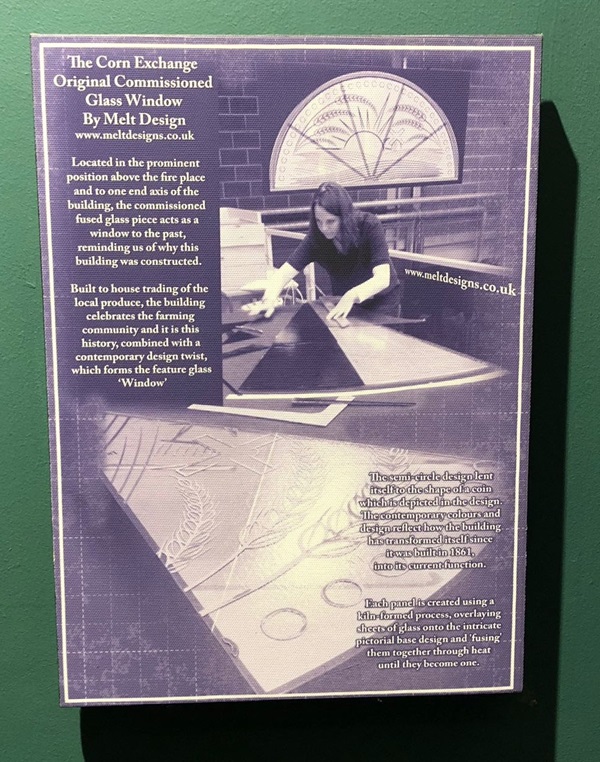
The text reads: Located in the prominent position above the fire place and to one end axis of the building, the commissioned fused glass piece acts as a window to the past, reminding us of why the building was constructed.
Built to house trading of the local produce, the building celebrates the farming community and it is this history, combined with a contemporary design twist, which forms the feature glass ‘window’.
The semi-circle design lent itself to the shape of a coin which is depicted in the design. The contemporary colours and design reflect how the building has transformed itself since it was built in 1861, into its current function.
Each panel is created using a kiln-formed process, overlaying sheets of glass onto the intricate pictorial base design and ‘fusing’ them together through heat until they become one.
Prints and text about Bury St Edmunds.
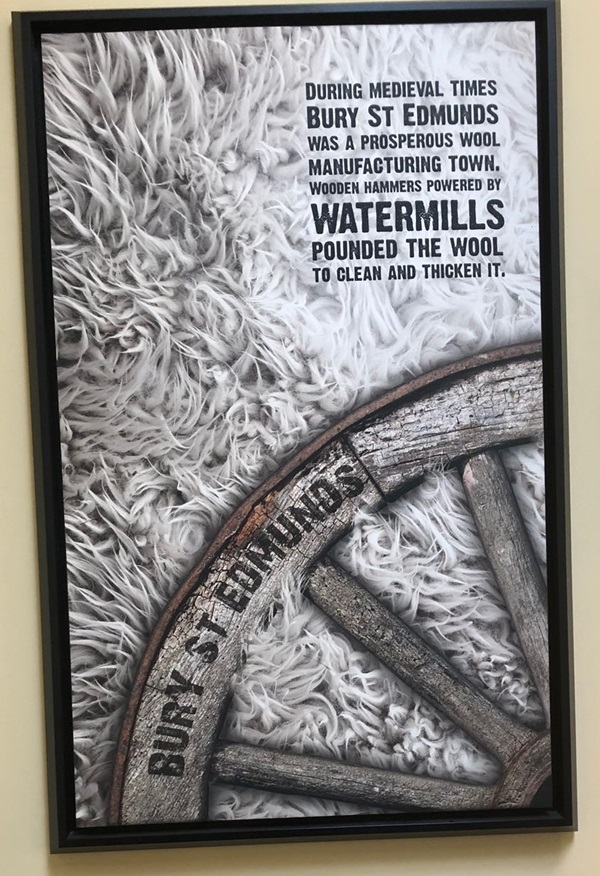
The text reads: During medieval times Bury St Edmunds was a prosperous wool manufacturing town. Wooden hammers powered by watermills pounded the wool to clean and thicken it.
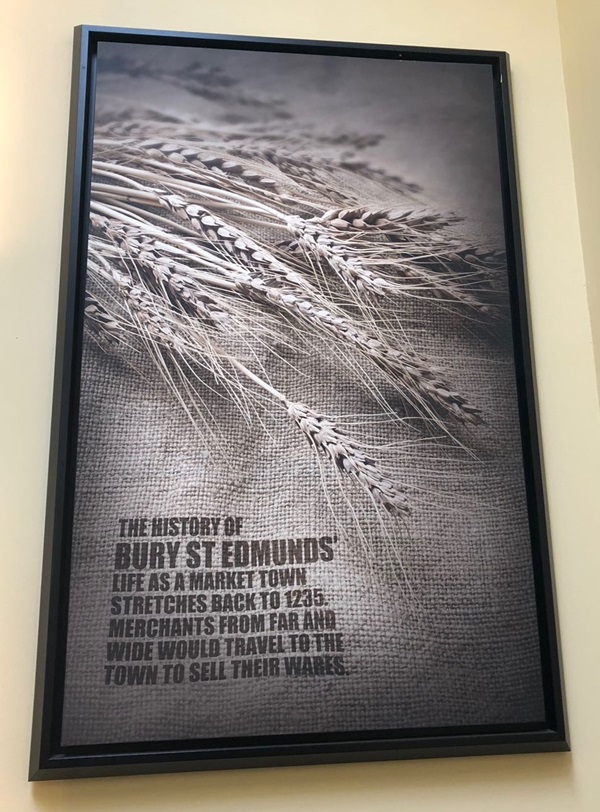
The text reads: Life as a market town stretches back to 1235. Merchants from far and wide would travel to the town to sell their wares.
External photograph of the building – main entrance.
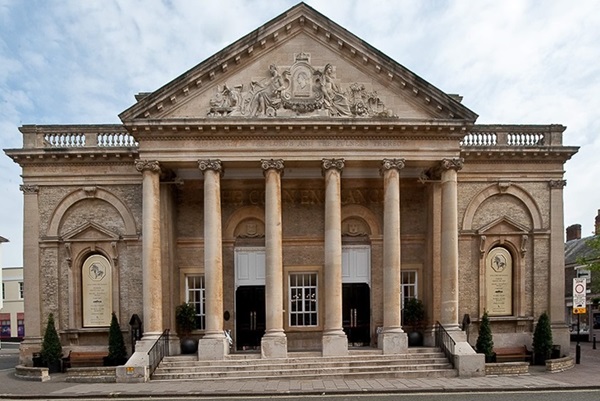
If you have information on the history of this pub, then we’d like you to share it with us. Please e-mail all information to: pubhistories@jdwetherspoon.co.uk